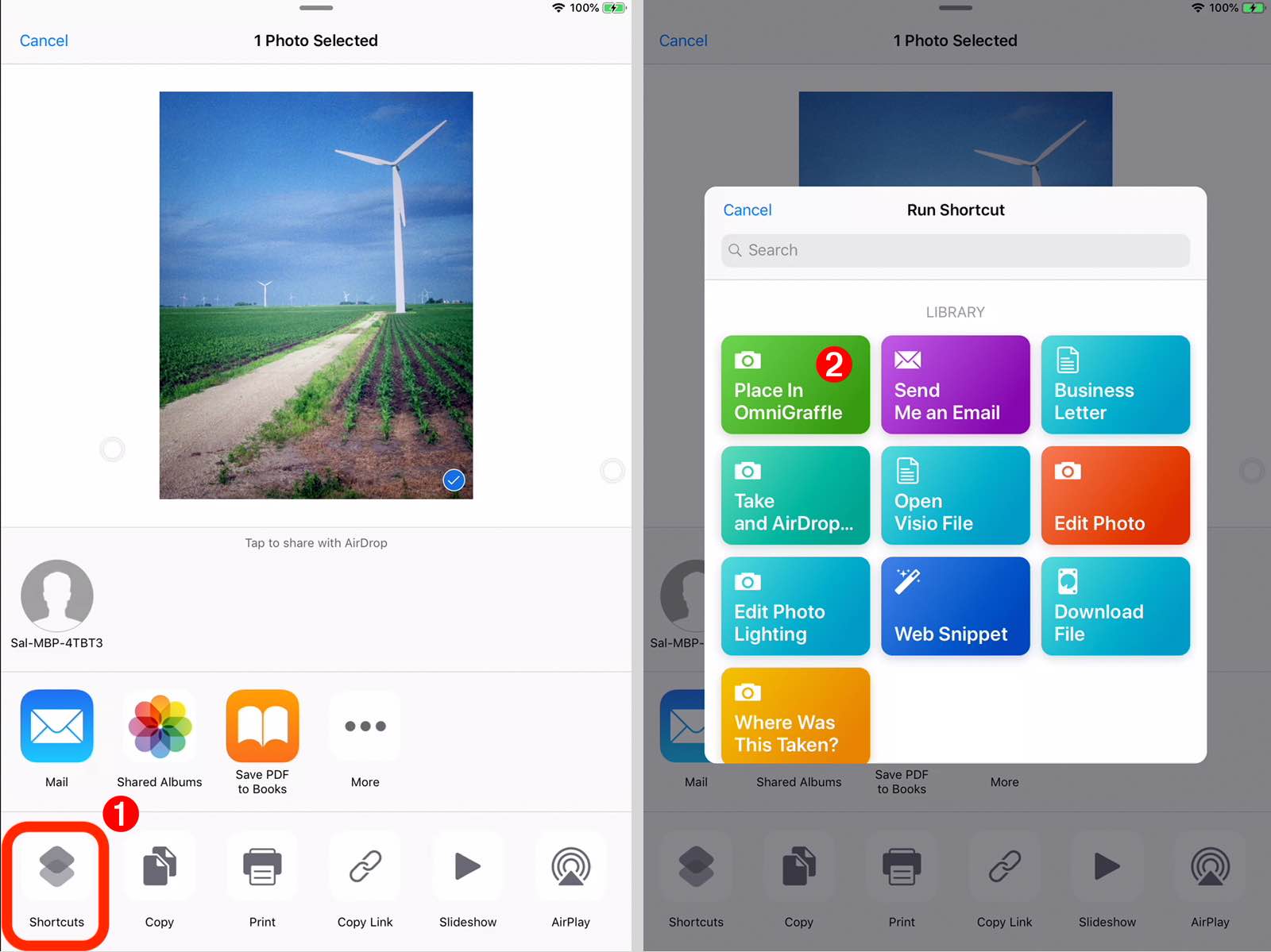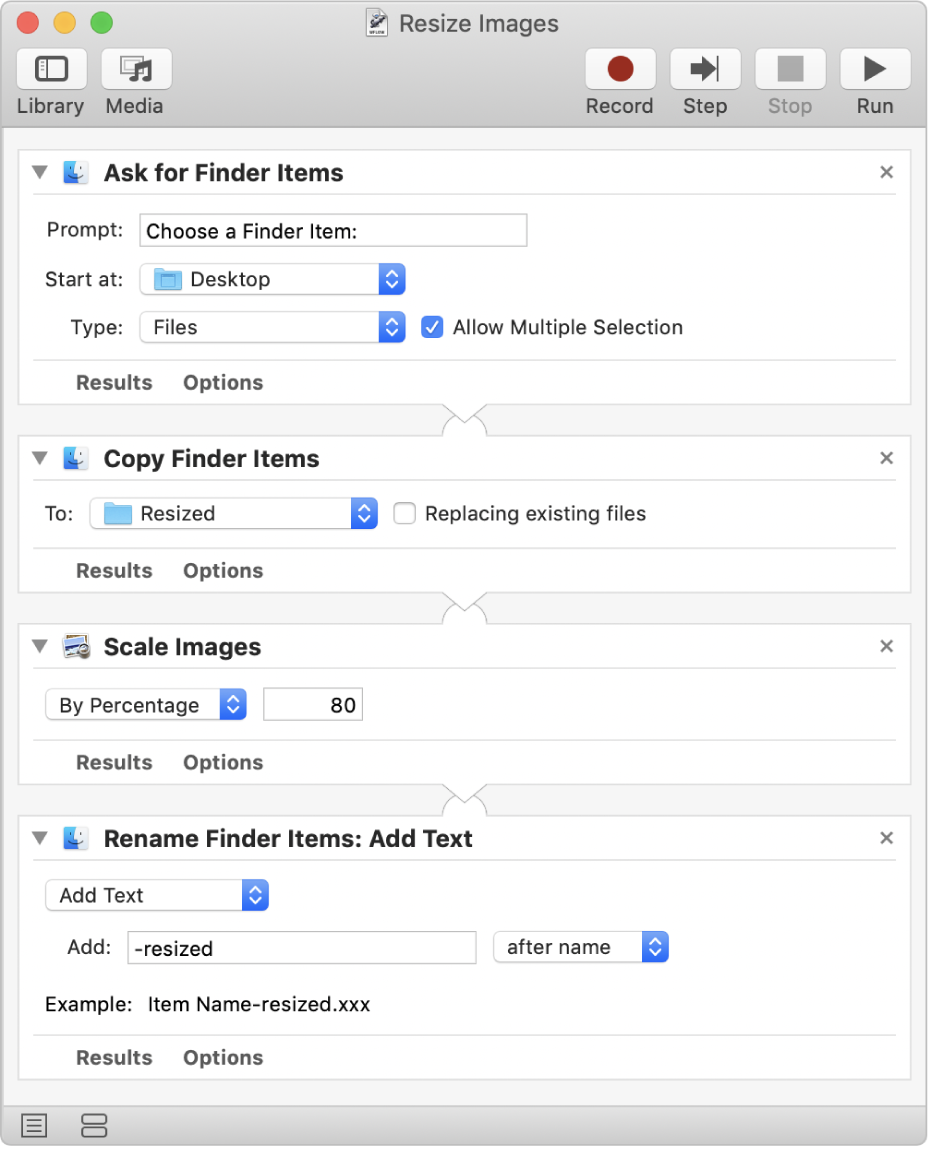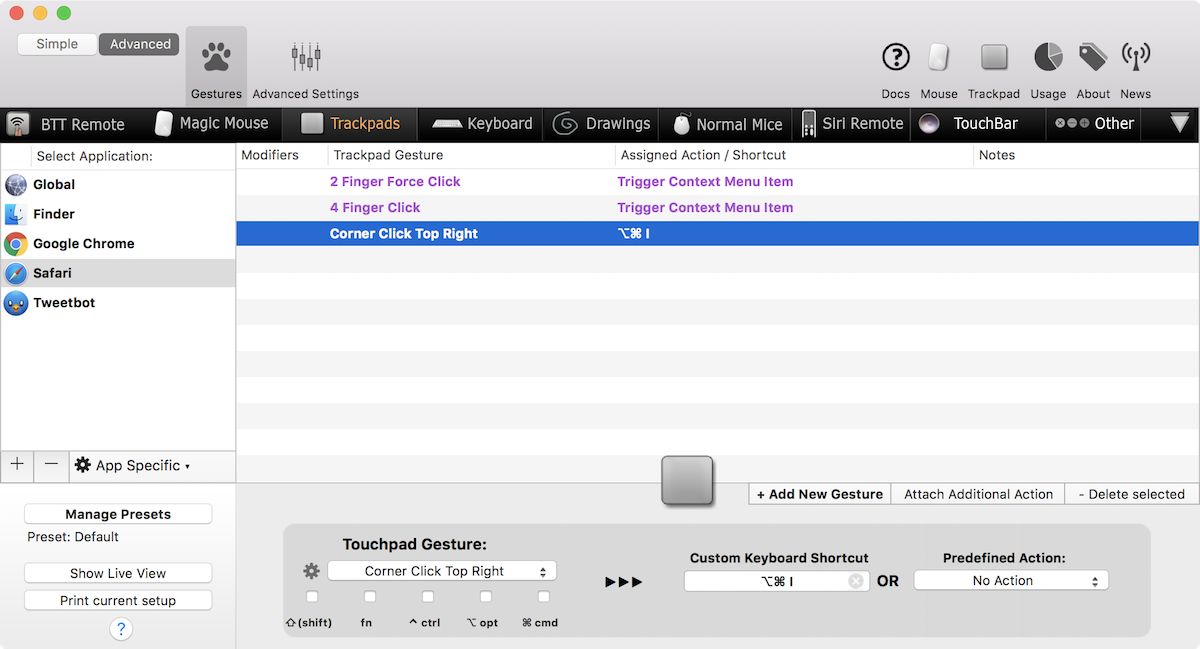From your desktop, click the search bar at the top of the screen. You can also use a keyboard shortcut to start a search: CmdG on Mac or CtrlG on Windows/Linux. Type the name of an app or a shortcut. You'll see a lightning bolt icon next to any shortcuts in your search results. The iOS 12 Shortcuts App Part 2: Apple and Third-Party Actions Thursday, October 25th, 2018 Author: Steve Sande. This is the second in a short series of articles about the Shortcuts app, a powerful automation tool built into iOS 12 (See how to automate tasks on Mac here). In our first article, we described how to download and install Shortcuts from the App Store, then introduced readers to. Keyboard shortcuts will only work while the app is running, but you can have the app start automatically at login using “Preferences” menu “About” tab. You can hide the menu bar icon or hide individual actions in the menu. To add separators to the script list menu: use.
- Best Iphone Shortcut Automations
- Action Shortcuts Automation Mac App Download
- Apple Shortcuts Automation
Recently we showed you how the new Siri Shortcuts can add Siri voice commands to a variety of apps that were previously “left out” of Apple’s intelligent assistant. Today we’re taking iOS automation a step further with an introductory look at the new Shortcuts app. Be sure to keep your browser pointed to the Rocket Yard for additional installments in this series that will dive deeper into the workings of this surprisingly powerful automation tool.
A few years ago, a third-party developer made an app called Workflow that allowed iOS users to create their own automated mashups of various apps. For example, you could tap a Workflow app and have the iPhone grab text from a web page and then paste it into a Notes document. Workflow brought a number of programming tools into the mix as well, allowing for entry of data by the user, analyzing conditionals, and so on. It was such a popular and successful app that Apple bought the company that made Workflow. With the release of iOS 12, the app is now called Shortcuts and has added even more usefulness with the ability to launch any Shortcut by using Siri.
Where Can I Get This App?
By default, Shortcuts is not installed with iOS 12. However, it’s available on the App Store for free (App Store link). It’s quite popular — as of publication time it was the #30 productivity app — and highly rated at 4.5 stars.
Getting Familiar with the Shortcuts User Interface
Let’s start by getting familiar with the purpose of Shortcuts and how the user interface is organized. For this purpose, we’ll quote Apple’s own description:
“Siri Shortcuts deliver a quick way to get things done with your apps with just a tap or by asking Siri. The Shortcuts app enables you to create personal shortcuts with multiple steps from your favorite apps. Start from hundreds of examples in the Gallery or drag and drop to create your own.
Shortcuts includes over 300 built-in actions and works with many of your favorite apps including Contacts, Calendar, Maps, Music, Photos, Camera, Reminders, Safari, Health as well as any app that supports Siri Shortcuts.
Use the Shortcuts app to:
* Get directions home, send your ETA and start listening to the news, just by asking Siri
* Add a home screen icon that calls a loved one
* Make animated GIFs
* Make PDFs from Safari or any app with a share sheet
* Get directions to the nearest coffee shop in one tap
* Tweet the song you’re listening to
* Get all of the images on a web page
* Send a message including the last screenshot you took
* And so much more…
Shortcuts can be launched from the Today widget, from Search or by asking Siri. You can even add an app icon to your home screen for your favorite Shortcuts.
Shortcuts opens up incredible possibilities to automate things you do regularly on your iPhone and iPad.”
Launching Shortcuts immediately displays the Library, a grid of buttons that each denote a shortcut that you’ve created or that has been provided as an example to new users (see screenshot below). Tapping a button runs the shortcut, which may present you with a dialog for input before it continues running.
Best Iphone Shortcut Automations

 (The Shortcuts Library, showing individual shortcuts that have been created)
(The Shortcuts Library, showing individual shortcuts that have been created)For users who have created a lot of shortcuts, there is a search field to make it easy to find the one you need. You’ll also notice a small button marked with three dots (…) on each shortcut. Tap this button, and you’ll see the individual actions behind the shortcut. Those actions are laid out like a flowchart (see image below):
(The individual actions that make up a shortcut)This example shortcut takes any rich text, text or URL and turns it into a PDF file. The shortcut uses two actions — these are small “programs” that perform a specific action using an app installed on the iOS device. For example, the “Make PDF” action is an Apple-provided action that takes input to create a PDF. In the example, that PDF is then sent to the next action in the “flowchart”, which is to open Quick Look so that the user can see what the PDF looks like and decide what to do with it (file it, send it to someone, etc…).
The buttons at the top of the shortcut listing require some explanation: the “Play” button actually does that, it runs the shortcut as if you’ve tapped the big button in the Shortcuts Library. The share sheet (the square box with the arrow rising from it) gives the user the chance to share this shortcut in a variety of ways; the recipient gets a link to an iCloud page with a Get Shortcut button on it.
The next button — the one at far right that looks like two toggle switches — takes the user to the Settings screen for the shortcut (see screenshot below). Here the user can change the name and icon for the shortcut, and most importantly, add it to Siri. Show in Widget adds a mini-button to the Shortcuts widget on the iOS Today screen, which is a powerful addition since you can launch a shortcut from the Today screen.
(The Settings page for a shortcut)If the shortcut is something that works with a number of different sources — a text file, web page, or a photo, for example — there’s an opportunity to add the shortcut to the iOS Share Sheet so that it can be used in any other app.
Want to turn a shortcut into an app? Tap the Add to Home Screen button to be walked through the easy process of saving an app button to your home screen. There’s also a Share Shortcut button for sharing your time-saving shortcut with friends.
The last entry, Import Questions, can be used to gather information from a user who is running your shortcut for the first time. The answer to questions suggested by the Shortcuts app are then used to customized the shortcut for the other user and her device.
This has been a relatively short introduction to Shortcuts. In the next installment of this series, we’ll go into detail on the available Apple and third-party actions that can be used to create your own shortcuts. The following installment will show how to make several rather easy shortcuts, while the last installment will use programming techniques to enable powerful shortcuts.
Be Sociable, Share This!
OWC is on-site wind turbine powered at 8 Galaxy Way, Woodstock, IL 60098 | 1-800-275-4576 | +1-815-338-8685 (International)
All Rights Reserved, Copyright 2018, OWC – Since 1988
Apple Shortcuts isn’t a new feature. In fact, it’s been around since iOS 12. But Apple has made some changes to the way the app works in its new iOS 13.1 update.
For one, it’s now a native app that comes with iOS — so you won’t have to download it separately. Apple has also added additional triggers for certain shortcuts, including NFC tags and Automations.
Related:
And yet, despite how convenient and powerful Shortcuts is, few people seem to know about it or its new features. With that in mind, here are some of the additional ways Shortcuts can help you out in iOS 13.1
Contents
- 1 Shortcuts Automations on iOS 13 / 13.1
- 2 How to set up a shortcut automation in iOS 13.1
- 4 When can I use Shortcuts Automations?
Shortcuts Automations on iOS 13 / 13.1
Shortcuts in iOS 13 has a new system called Automations. And it fundamentally changes how you interact with certain shortcuts on a day-to-day basis.
These automations will run a shortcut automatically when certain parameters or triggers are met. Some examples include when you stop your alarm in the morning or when you arrive at work.
While not available for all actions, certain Automations can be set to run without any prompting. That means you won’t need to actually do anything — it’ll run seamlessly in the background and perform the various tasks you assign to it.
Personal Automations
Personal automations are ones that run solely on your devices, but are still incredibly powerful. Some of the parameters, or triggers, include:
- Time of day: For example, a shortcut could trigger at 8 a.m. or 3 p.m.
- Alarm: Triggers when based on an alarm, such as when it stops.
- Apple Watch Workout: Triggers a shortcut when you start working out using the Apple Watch.
- Arrive: Triggers a shortcut when you arrive at a location — the gym, work, home, etc.
- Leave: Triggers a shortcut when you leave a location.
- Before I Leave: Based on your activity, triggers a shortcut before you leave a location. Exmaple: 15 minuets before you leave for work.
- CarPlay: Triggers a shortcut when you connect to CarPlay.
Just looking at that list, you can probably imagine how powerful some of the shortcuts can be. You can get a shortcut to tell you the weather as soon as your alarm is stopped, or a shortcut that queues a certain playlist when you get to the gym.
Before I Leave is also incredibly powerful. It uses machine learning to analyze when you tend to drive every day and bases its prediction on that. You can set a shortcut to give you the current traffic conditions 15 minutes before you leave work.
How to set up a shortcut automation in iOS 13.1
A simple way to understand this is via an example. Here is how you can set up a simple shortcut automation that helps you to understand some of the basics around this new feature. In this example, we will create an easy automation that plays a podcast/music at a certain time in the morning. We have customized it to play only on weekdays so that we can still enjoy the extra sleep on the weekends! Yes, you can customize it by day of the week.
The first part of this process involving using the automation and setting up a trigger using ‘Time of the day’.
Now that you have followed the steps to define the trigger event in this case time of the day, your next sequence of steps will need to define what it is that you want to accomplish. In this case, we are setting up the automation to play simple music/ podcast from the library on the iPhone.
Once you enable the automation that you created, you are done. It will get activated automatically and perform the action that you want your iPhone or iPad to do. Give it a try!!
Home Automations

You can also trigger certain home automations when using Shortcuts and the process is just as simple and powerful.
Home automation parameters include:
- People Arrive: Triggers a shortcut when someone arrives home, using geolocation.
- People Leave: Triggers a shortcut when everyone leaves the house.
- Time of Day Occurs: Pretty simple, this just runs a shortcut when it hits a specific time.
- An Accessory is Controlled: You can set certain actions to activate when something like the lights are turned on.
- A Sensor Detects Something: Triggers a shortcut when a home-based sensor device detects something — movement, smoke or dangerous carbon monoxide levels, for example.
As you can see, these are equally as powerful. You can have a shortcut that plays relaxing music and activates a thermostat when you arrive home, or a shortcut that turns on a home alarm when everyone leaves.
You can also have texts sent to your device when a camera detects motion or a smart home smoke detectors sniffs smoke in the air.
NFC-based automations in iOS 13.1
Shortcuts in iOS 13 also support NFC tags. This is a lot like the current capabilities of many Android smartphones, and it’s just as useful as location- or time-based automations.
The process involves getting NFC tags, which commonly appear as stickers. At this point, it looks like it’s fairly tricky to set up an NFC trigger and encode a shortcut on it. But Apple may make the process easier in the future.
Action Shortcuts Automation Mac App Download
As far as use cases, they’re pretty limitless.
You could, for example, place an NFC tag on your home speaker system. When you tap your iPhone on this NFC tag, it could automatically trigger your device to connect to Bluetooth, turn down the volume and start playing a certain playlist or podcast.
Place an NFC tag in your car and you could tap it to automatically enable Do Not Disturb While Driving. It could also bring up your favorite navigation app and automatically text someone your current ETA.
Apple Shortcuts Automation
Unfortunately, you’ll need an iPhone XS or iPhone XR or newer to actually use NFC tags. While previous iPhones had NFC support, Apple’s newer devices are the only ones that can perform background reading of NFC tags — which is required for automations.
When can I use Shortcuts Automations?
Originally, Automations was due for release in the base version of iOS 13, which Apple launched on Sept. 19. But during the beta testing cycle, Apple pulled the feature from iOS 13.
It now appears that Automations will be reintroduced in iOS 13.1, which is currently slated for a general release to the public on Tuesday, Sept. 24.
When it does launch, we highly recommend playing around with Shortcuts and the new Automations features. We’ve been praising the life-enhacing benefits of Shortcuts for quite a while now. And hopefully with Automations and NFC support, more people will start using the Apple Shortcuts app.
Mike is a freelance journalist from San Diego, California.
While he primarily covers Apple and consumer technology, he has past experience writing about public safety, local government, and education for a variety of publications.
He’s worn quite a few hats in the journalism field, including writer, editor, and news designer.